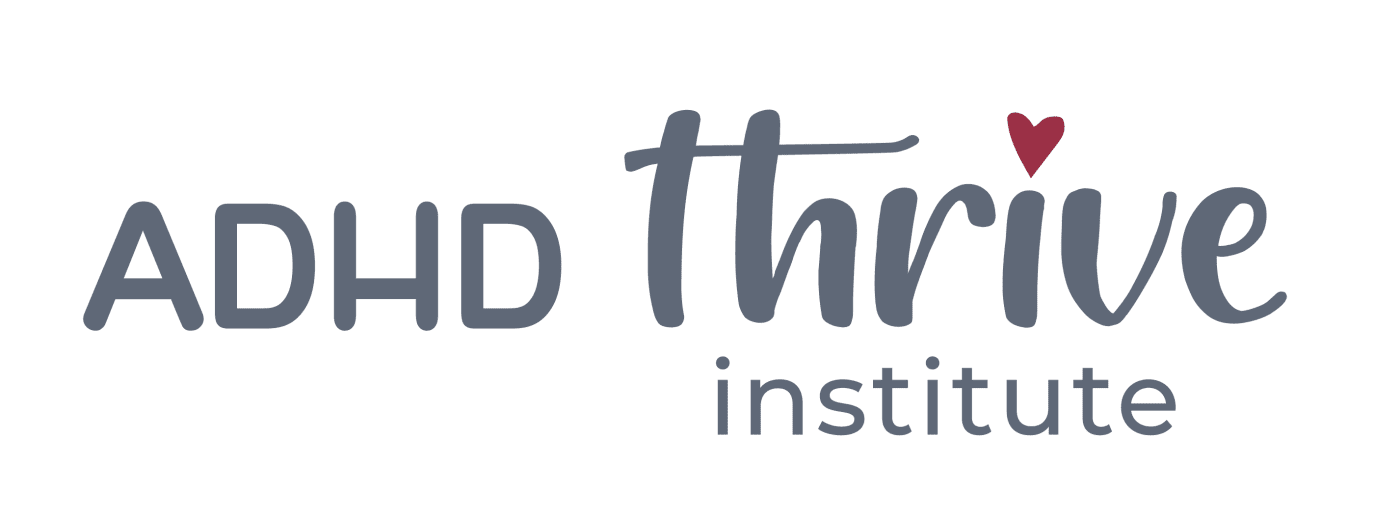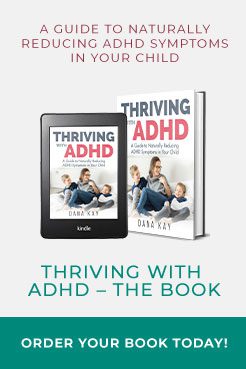It’s back-to-school season, and if you’re raising a child with ADHD… you might be feeling more anxious than excited.
While other parents are checking off supply lists and snapping first-day photos, you might be bracing for meltdowns, morning chaos, or the dreaded school refusal. You’ve read the articles. You’ve tried the color-coded charts and behavior plans. You’re doing everything right, and still, the transition feels hard.
Here’s why: Most ADHD back-to-school advice completely misses the most important piece.
It’s not just about prepping routines or organizing supplies. It’s also about helping your child’s nervous system handle the massive shift that going back to school brings.
Because when kids with ADHD are thrown into a new classroom, new demands, and a brand-new routine, their internal regulation system gets overwhelmed fast.
And when that happens, even the best schedules, sticker charts, or sensory kits fall flat.
In this post, you’ll learn:
- Why ADHD kids struggle more with back-to-school transitions
- What most parents overlook when getting their child ready
- How to build a school routine that supports emotional regulation
- What to include in your ADHD back-to-school checklist
- How to partner with your child’s teacher for long-term success
If you’re ready to stop dreading the first day of school (and the weeks that follow), this post is for you.
Why the Typical ADHD Back-to-School Prep Falls Short
When it comes to getting kids ready for school, most back-to-school advice focuses on external tools:
- Buy the right supplies.
- Make a color-coded schedule.
- Create a checklist for the morning.
And while those strategies aren’t wrong, they’re only part of the picture, especially for a child with ADHD.
Because ADHD isn’t just a challenge of organization. It’s also a challenge of internal regulation.
That’s why your child can have the perfect backpack, the neatest desk, and the clearest calendar… and still struggle with ADHD school anxiety, meltdowns, or refusal to go.
What most parents overlook is this:
Kids with ADHD don’t just need help managing the logistics of school. They also need help managing the stress of school.
ADHD brains are more sensitive to transitions, especially big ones like starting a new grade, adjusting to a new routine, or dealing with different teachers and classroom expectations. Even small changes can create internal overwhelm that shows up as resistance, irritability, or avoidance.
Their nervous system hasn’t caught up to the new demands being placed on it yet.
That’s why a solid ADHD routine for kids isn’t just about what time to wake up or when to pack a lunch.
It’s about calming the nervous system so your child can handle the routine at all.
Until we support the internal shifts that need to happen (like helping your child regulate emotions and ease into structure) the external stuff just won’t stick.
The Real Missing Piece — Nervous System Regulation
Here’s the truth most back-to-school guides skip entirely:
Before your child can follow a routine…
Before they can use a planner or remember their homework…
Their nervous system has to feel safe.

And for many kids with ADHD, that’s not their baseline.
ADHD kids often live in a state of nervous system dysregulation, meaning their brain and body are constantly scanning for danger, stress, or overwhelm. Back-to-school season only ramps that up with:
- New environments
- New expectations
- Earlier wake times
- More demands on executive function
It’s no wonder so many ADHD kids fall apart by the second week of school.
You might notice it as:
- Emotional outbursts over small things
- Difficulty falling or staying asleep
- School refusal or avoidance
- Trouble focusing, even when they want to
- Saying “I don’t know why I’m upset” (but clearly being upset)
These are signs your child is dysregulated and their nervous system is struggling to keep up.
ADHD calming strategies (like deep breathing, movement breaks, sensory input, or predictable transitions) can make a huge difference. So can understanding when your child is in “fight, flight, or freeze” mode versus when they’re actually ready to learn.
Why does this matter?
Because executive function—the mental “air traffic control” system responsible for focus, planning, impulse control, and memory—can only turn on when the nervous system is regulated.
If your child is stuck in survival mode, they won’t access the part of the brain that helps them think clearly, follow directions, or remember what’s next on the schedule.
That’s why nervous system regulation is so foundational.
How to Prepare Your ADHD Child for School (From the Inside Out)

So how do you actually help your child get ready for school, without constant meltdowns or power struggles?
It starts with supporting their nervous system first, and that means focusing less on what they do and more on how they feel in their body.
Let’s talk about how to build the best morning routine for ADHD kids, one that regulates, calms, and prepares them to walk into school feeling grounded.
- Create a Consistent, Calming Morning Routine
A smooth school morning doesn’t start with barking commands or rushing out the door. It starts with rhythm and predictability.
ADHD kids thrive on structure, but it has to be soothing, not rigid. Try using the same order of steps every morning (wake, bathroom, dress, breakfast, backpack) so the body and brain know what’s coming.
Add visual cues (pictures, checklists) if your child struggles to remember what comes next. This makes your ADHD school morning routine feel safer and more manageable.
- Anchor the Day With Sensory Input
The nervous system craves sensory regulation. That means you can literally help your child focus better by moving their body or stimulating their senses before the school bell ever rings.
Here are a few favorites for morning regulation:
- Jumping on a mini trampoline
- Weighted blanket snuggles before getting up
- Upbeat music during breakfast
- Chewing crunchy foods (like carrots or apples)
- Brushing teeth with a vibrating toothbrush
These simple tools help ground your child’s nervous system, making it easier to access executive function skills once they get to class.
- Use Transitions Wisely
Transitions can be brutal for kids with ADHD, especially the shift from home to school. That’s why preparing your ADHD child for school means building in transition time, not just hoping it goes well.
Use:
- Countdowns (“10 minutes until we leave… 5 minutes…”)
- Visual timers to show the passage of time
- Gentle transitions (like a calming song that plays as they put on shoes)
- No surprises—avoid sudden changes to the routine when possible
This gives your child’s brain time to shift gears, rather than feeling yanked from one environment into another.
- Practice the Routine Before School Starts
Don’t wait until the first day of school to figure this out.
About a week or two before school begins, start easing into your ADHD back to school routine. Set the alarm earlier. Practice the flow of getting ready. Even do a practice drive to school.
Rehearsing routines ahead of time gives your child’s brain time to adapt and reduces the shock to their system on Day 1.
The goal isn’t perfection; it’s predictability. Because when the nervous system knows what to expect, everything gets a little easier.
Your ADHD Back-to-School Checklist (That Actually Works)

Most back-to-school checklists focus on school supplies: pencils, notebooks, backpacks. But if you’re raising a child with ADHD, you know that the real challenges aren’t about what’s in their backpack.
They’re about what’s happening inside their body and brain.
To truly prepare your child for a smooth school year, you need more than a checklist of supplies. You need a daily rhythm that supports regulation, resilience, and readiness.
Here’s your back to school ADHD checklist, the one that actually helps kids thrive, not just survive.
✅ Daily Calming Strategy
Whether it’s deep breathing, a weighted blanket, or a few minutes of quiet time with a favorite fidget, make calming practices part of your child’s ADHD daily routine.
A regulated nervous system helps them walk into school feeling grounded instead of overwhelmed.
✅ Predictable Sleep/Wake Times
Sleep is everything, especially for kids with ADHD. Aim for the same bedtime and wake-up time every day (yes, even weekends if possible).
Better sleep leads to better emotional control, focus, and executive function.
✅ A Visual Daily Schedule
Don’t expect your child to remember what’s next—show them. Post a visual schedule that lays out the day in simple, clear steps: wake up, eat, brush teeth, pack bag, get dressed, etc.
This kind of ADHD school schedule reduces anxiety and increases follow-through.
✅ A Protein-Rich, Low-Sugar Breakfast
Skip the cereal. Blood sugar crashes lead to mood crashes.
Start the day with healthy fats and protein like eggs, nut butter, avocado, or sausage. It supports brain function and helps with focus and behavior all morning long.
For 4 healthy breakfast ideas, check out this blog post.
✅ Movement Before School
Whether it’s trampoline jumps, dancing to a favorite song, or walking the dog, movement activates the brain.
Make it part of your morning routine. Even just 5–10 minutes can dramatically improve focus and reduce school struggles.
✅ Daily Lifestyle Strategies that Support the Nervous System
Along with the above, make sure that you are incorporating lifestyle strategies each and every day that support the nervous system.
Because when you support the nervous system, you set your ADHD child up for success – both at school and at home.
So, what are these daily lifestyle strategies? They are:
- Anti-inflammatory nutrition (eliminate or reduce gluten, dairy, soy, processed foods, and excessive amounts of sugar and add in lots of nutrient-dense foods like fruits, veggies, healthy fats, and protein) – Check out these 2 podcast episodes to learn more about the best diet for ADHD kids: The ADHD Diet, Part 1 and The ADHD Diet, Part 2.
- Targeted supplements (like some of these mentioned in this blog post, based on your child’s needs)
- Gentle detox strategies (make sure your child is sweating, drinking lots of water, and reducing toxin exposure)
- ADHD parenting strategies (because typical parenting strategies often don’t work with ADHD kids)
- Daily movement and consistent exercise
- Protecting sleep routines like your life depends on it—because it kind of does
This is how we support kids from the inside out, building resilience in the body so that the brain can function at its best.
Now, you might be wondering, does this stuff actually help?
Check out what Tiffany told us about her son’s school improvements:

Before joining our program and implementing some of these strategies that we’re sharing in this post, Tiffany was at her breaking point.
Her 6-year-old son had tried every medication for ADHD and anxiety. Nothing was working. Things were actually getting worse.
He ended up in the hospital.
They were desperate. Exhausted. Willing to try anything.
Now, he’s off his medications and thriving.
And just recently, he was awarded the ROAR Kid Award at school for good choices, positive behavior, and hard work.
This was something she used to think was 100% IMPOSSIBLE.
But she quickly learned that the best way to prepare your ADHD child for back to school is to prepare their body to handle it.

Tips for School Success: What Parents + Teachers Need to Know
It’s not just about prepping at home. Your child’s success at school also depends on the support they get in the classroom, and the earlier you build that bridge between home and school, the better.
Here’s how to set your child and their teacher up for a smoother year:
- Collaborate With the Teacher Before School Even Starts
Don’t wait for problems to pop up. Reach out to your child’s teacher early with a friendly, proactive message. Share what works (and what doesn’t) at home.
Most teachers want to help but may not be trained in how to deal with ADHD students or recognize the signs of overwhelm. A little insight from you goes a long way.
- Send a Simple ADHD Support Plan
You don’t need to write a novel. One page is enough! Include things like:
- Common triggers (noise, transitions, group work)
- Signs your child is dysregulated
- What helps them refocus or calm down
- Tools they’re used to using at home (fidgets, headphones, movement breaks)
This helps teachers provide ADHD support at school without guessing or waiting for behaviors to escalate.
- Use Tools That Work in the Classroom
Here are a few ADHD classroom tips that make a big difference:
- Fidgets (small, quiet ones like stress balls or tangle toys)
- Movement breaks (let your child run a quick errand or stretch)
- Nonverbal signals (like a hand signal for “I need a break”)
- Desk dividers or noise-canceling headphones to limit distractions
- Written instructions (so they’re not relying only on auditory memory)
These aren’t crutches. They’re supports. Just like glasses help a child see, these tools help ADHD kids learn.
- Build Emotional Vocabulary at Home
If your child can’t name what they feel, they’re more likely to act it out.
Start building emotional literacy with books, visuals, and simple daily check-ins: “Do you feel calm, frustrated, or worried right now?” This gives them the language to advocate for themselves, in and out of the classroom.
Bonus: teachers often notice and appreciate when kids can express their needs with words instead of behaviors.
- Encourage Every Win
A successful school day for an ADHD child might look different than you imagined. That’s okay.
Focus on progress: a calmer morning, one less meltdown, one more assignment completed. These small wins build confidence and momentum.
With the right support system in place, both at home and in the classroom, ADHD kids can thrive in school environments that once overwhelmed them.

A Final Word to Parents Feeling Anxious
Back-to-school isn’t just a transition for your child. It’s also a transition for you, too.
Many parents tell me they’re anxious, exhausted, or even second-guessing themselves during this season. That’s normal. This journey is a lot, especially when you’re raising a child with ADHD.
But here’s what I want you to know:
Your Calm Helps Regulate Theirs
Your child doesn’t just need a new routine. They need your nervous system as an anchor. That’s what co-regulation is all about. When you stay grounded, even when things feel hard, your child feels safer. More settled. More capable of handling the day.
So breathe. You’re doing better than you think.
This season doesn’t have to be flawless to be successful. Your child might not have picture-perfect mornings, neat binders, or zero meltdowns, and that’s okay.
What matters is that you’re building something deeper: a foundation of connection, understanding, and support that will carry them through far more than just this school year.
Want a Smoother School Year? Start Here.
You don’t have to figure this out on your own. We’ve helped thousands of families move from chaos to calm, and we’d be honored to help yours too.
👉 Watch our free ADHD Thrive Masterclass – Learn the exact framework we use to help families reduce ADHD symptoms—naturally.
👉 Or book a free call with our team to talk through your next steps – Let’s talk about what’s going on with your child and how we can help.
Because back-to-school doesn’t have to mean back to stress.







